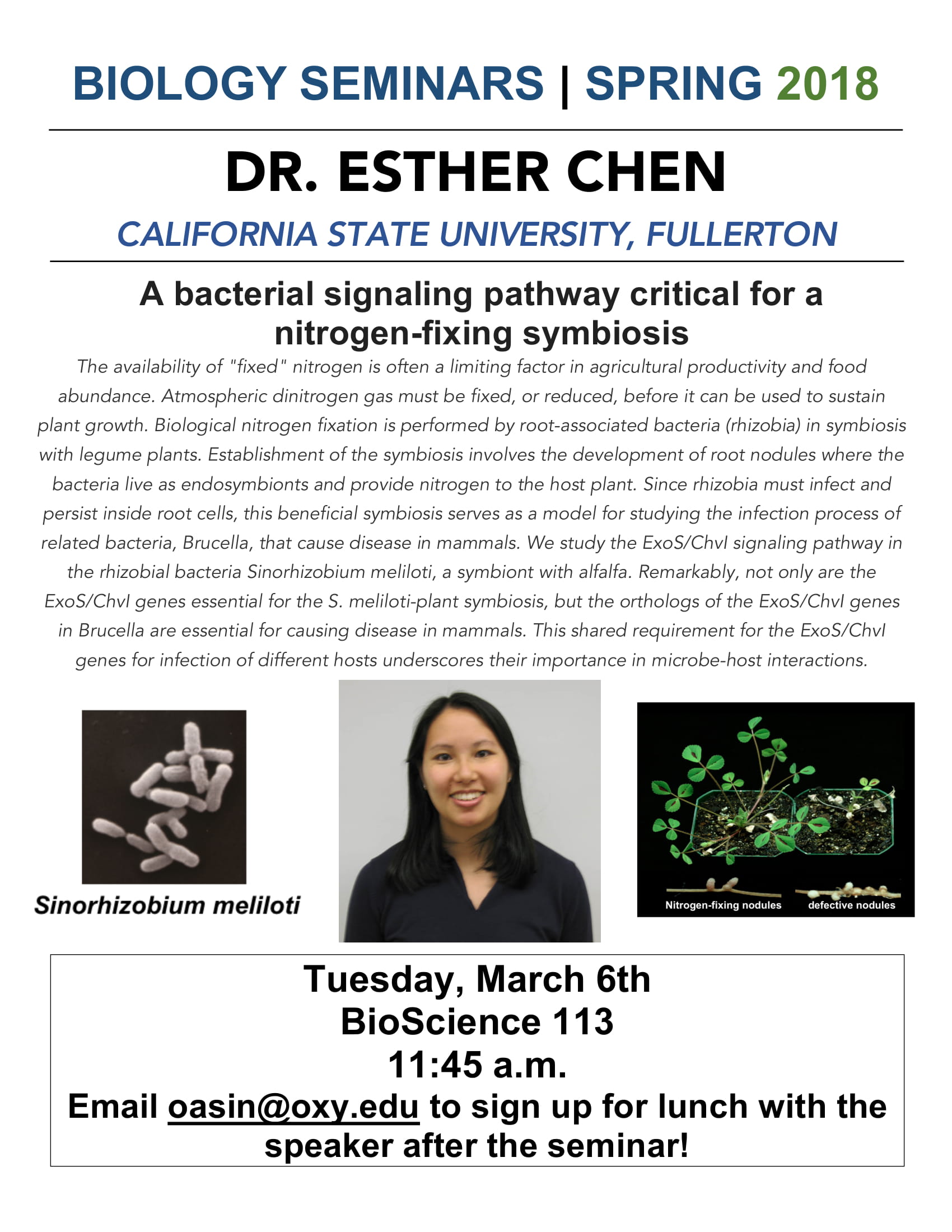
BIOLOGY SEMINARS | SPRING 2018
Dr. Esther Chen
California State University, Fullerton
A bacterial signaling pathway critical for a nitrogen-fixing symbiosis
The availability of "fixed" nitrogen is often a limiting factor in agricultural productivity and food abundance. Atmospheric dinitrogen gas must be fixed, or reduced, before it can be used to sustain plant growth. Biological nitrogen fixation is performed by root-associated bacteria (rhizobia) in symbiosis with legume plants. Establishment of the symbiosis involves the development of root nodules where the bacteria live as endosymbionts and provide nitrogen to the host plant. Since rhizobia must infect and persist inside root cells, this beneficial symbiosis serves as a model for studying the infection process of related bacteria, Brucella, that cause disease in mammals. We study the ExoS/ChvI signaling pathway in the rhizobial bacteria Sinorhizobium meliloti, a symbiont with alfalfa. Remarkably, not only are the ExoS/ChvI genes essential for the S. meliloti-plant symbiosis, but the orthologs of the ExoS/ChvI genes in Brucella are essential for causing disease in mammals. This shared requirement for the ExoS/ChvI genes for infection of different hosts underscores their importance in microbe-host interactions.
Tuesday, March 6th
BioScience 113
11:45 a.m.
Email oasin@oxy.edu to sign up for lunch with the speaker after the seminar!
p.p1 {margin: 0.0px 0.0px 0.0px 0.0px; font: 12.0px 'Helvetica Neue'; color: #454545} p.p2 {margin: 0.0px 0.0px 0.0px 0.0px; font: 12.0px 'Helvetica Neue'; color: #454545; min-height: 14.0px}
